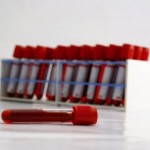Kinds Of Antibiotics
Antibiotics are generally used for the cure of bacterial infections both in humans, plants, and animals. There are different kinds of antibiotics for several kinds of treatments. One way of grouping or classifying antibiotics is based on their action on bacteria, which is narrow spectrum and broad spectrum. There is equally the classification of the different kinds of antibiotics based on their chemical structures. This article is going to focus on the latter classification.
Different kinds of antibiotics based on chemical structure include;
* Aminoglycosides
*Cephalosporins
*Fluoroquinolones
*Macrolides
*Penicillins
*Polypeptides
*Sulfonamides
*Tetracyclines
Aminoglycosides: This is among the kinds of antibiotics that prevents the formation of protein in cell walls invaded by bacteria. This is why they are very effective in treating illnesses such as pneumonia, typhus, and other bacteria-causing infections. Though they are used in treating bacterial infections, caution is usually applied when administering the because they can weaken liver and kidney functions.
Cephalosporins: These kinds of antibiotics are made of bacterial agents, including cephalothin, cephalexin, cefazolin, cephradine, cephapirin, and cefadroxil. They function in a similar pattern as penicillin by destroying bacterial cell walls during reproduction. But their treatment range is usually wider than the penicillin because they can be used to treat diseases such as gonorrhea and meningitis, which cannot be treated with penicillin. However, in many cases, someone who is allergic to penicillin might equally be allergic to Cephalosporins.
Fluoroquinolones: are the only drugs among all kinds of antibiotics that can directly prevent the multiplication of bacteria in the cell wall. Fluoroquinolones comprises oflocacin, norfloxacin, levofloxacin, and enoxacin. They can be taken orally as the body absorbs them very well. They are more commonly used in the treatment of respiratory tract and urinary tract infections.
Macrolides: These kinds of antibiotics equally fight against the invasion of bacterial in the cell walls. They are usually used as alternative to penicillin treatment for those who are allergic to penicillin. Macrolides include erythromycin, clarithromycin, and azithromycin. They have wider actions on bacteria than penicillin and are used in the treatment of gastric tract infections and respiratory tract infections. Just like other kinds of antibiotics, they equally have side effects which include diarrhea, nausa, and gastrointestinal discomforts. Macrolides are not administered to breastfeeding women and pregnant women. It can equally impair
kidney and liver functions if caution is not applied in its administration.
Penicilins are one of the most common kinds of antibiotics. Their primary function is to destroy cell walls of bacteria during their reproduction process. This set of antibiotics is comprised of cafcilin, amoxicillin, oxacillin, cloxacillin, ticarcillin, ampicillin, penicillin V and penicillin G. These drugs are used to cure infections that are related to the respiratory tract, ear, eye, teeth, and the skin. Some people can develop side effects such as fever or rash during penicillin administration. Most times these drugs are combined with other antibiotics types for certain treatments.
Polypeptides and Tetracyclines: Polypeptides are very toxic and are made of colistin, polymyxin B, and bacitracin. They are more commonly administered on the surface of the skin.
Tetracyclines are used in the treatment of a wide range of infections and they comprise minocycline, doxycycline, and tetracycline. They are commonly used in the treatment of infections of urinary tract, respiratory tract, and the middle ear.
Sulfonamides: They have similar functions as penicillin. Sulfonamides are among the earliest developed kinds of antibiotics and are effective in the fighting of kidney infections. Gantrisi is a very common sulfonamide administered on patients with kidney effections.






